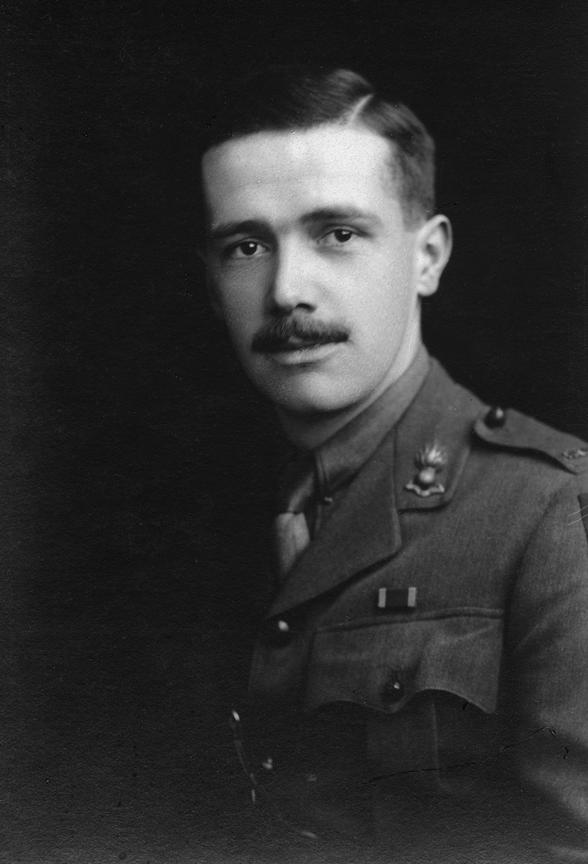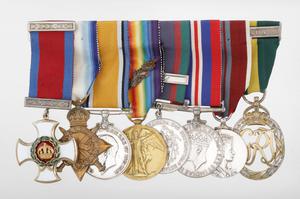Unit
Branch
Royal Canadian Corps of Signals
Service Component
Canadian Army
Service Number
birth
1889/09/23
Carleton County, Ottawa, Ontario, Canada
death
1973/03/08
Ottawa, Ontario, Canada
grave
Beechwood Cemetery, Ottawa, Ontario
Gender
Male
Alexander Alderson Anderson was born on 23 September 1889 near Ottawa to Lieutenant Colonel William and Dorothy Anderson. His father, a veteran of the Fenian raids, was a respected member of the Canadian Civil engineering community. He was responsible for the design and installation of many lighthouses and signal stations on both coasts and Great Lakes and had been appointed Chief Engineer and General Superintendent of Lighthouses by 1891. An active member of the militia, the Colonel commanded the 43rd Regiment and represented Canada on the Bisley rifle team at the turn of the century. Alexander, the fourth son in a family of five children, grew up Ottawa and attended Lisgar Collegiate and Ashbury college before attending the Royal Military College, graduating with honours in 1909. He proceeded to McGill University to earn a Bachelor of Science before following his father’s footsteps and joining the Dominion Public Service as an Assistant Engineer. He also had joined the Canadian Militia as a reserve officer during this period.
When he was attested to the Canadian Expeditionary Force, 8 February 1915, he was single and listed his father’s address at 64 Cooper Street in Ottawa as his place of residence. He enlisted in the Canadian Engineers and was taken into the 2nd Canadian Divisional Signal Company as a Lieutenant, arriving in France at the District Depot No.2 on 15 September 1915, with the first draft of that unit. He attended a four week “wireless” course at the end of that year. After enduring a bout of laryngitis in February 1916 he became the officer commanding the 4th Section of the company. On 24 June he was promoted Captain and made 2 Lance Corporal of the company. The company’s war diary for June of 1917 notes that he had been Mentioned in Dispatches on 9 April 1917 – presumably for his actions on the first day of the Vimy Ridge battle. He had been promoted again to Major on 24 April 1917 and placed in Command of the 2nd Divisional Signals Company and would remain its Commanding Officer until it was disbanded after the war. He was Mentioned in Dispatches by Douglas Haig once again on 11 November 1917. It is not clear what this was for, but this is not long after the 2nd Canadian Division had finally captured Passchendaele in the otherwise failed British offensive of the Third Battle of Ypres. Anderson was awarded the Distinguished Service Order in the New Year’s Honour’s List of 1918 “for exceptional performance in the field”. Anderson received a further Mention in Dispatches by Sir Douglas Haig in December 1918. He was not repatriated from France until April 1919 and subsequently returned to Canada aboard HMT Cedric on 19 May 1919 and demobilized on 28 May.
He appears to have returned to his civilian occupation as a Civil Engineer. He married Helen Jervis on 8 September 1928 and at that time he was living in Fort William. He continued a career as an engineer with the Federal government working in Toronto, London and Ottawa, Ontario. He also continued his militia career in the inter-war years, commanding the No 1 Signal Company Casualty Clearing Station (CCS), and the 1st Reserve Divisional Signals, CCS in 1925. His medal set also includes the War Medal from the Second World War and the Canadian Volunteer Service Medal (and Bar) indicating service with the Canadian army when he served with the Royal Canadian Corps of Signals both overseas and in Canada. In the latter case, he became the 2 Lance Corporal of the Royal Canadian Signals Training Centre in Kingston upon his return, and in November 1944 received the Efficiency Decoration in recognition of 20 years of service with the Canadian Militia. He also received the Coronation Medal of 1953. After a brief stint in 1945 with the Department of Public Works in Ottawa he retired later that year.
He died suddenly on 8 March 1973 at the age of 83 and is buried in Beechwood National Cemetery in Ottawa.



